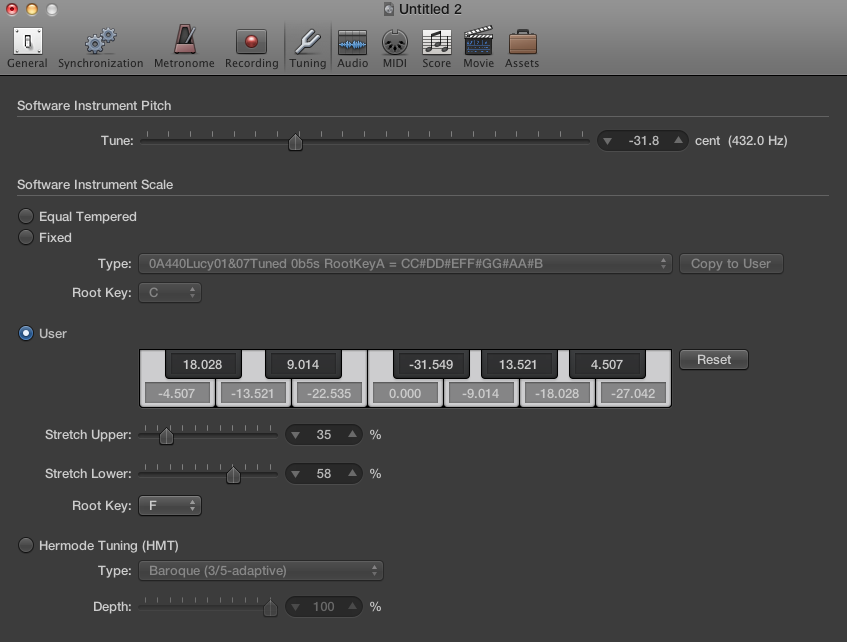Why Is Every Song Out-of-Tune?
All common instruments are created with a gigantic engineering trade-off.
In order to make instruments that play in any key, every group of notes must be slightly out-of-tune with each other.
Music is still made this way. But it doesn't have to be.
Nature's Intervals
Nature produces "pure" intervals. The laws of math and physics demand that every tone carries along subtle extra notes that correspond to pure intervals.
Humans produced "equal" intervals. Engineering (and jazz) rejected nature's laws, and optimized for convenience and expression.
Here is a wonderful table from Wikipedia:
| Interval Name | Interval (Equal) | Cents (Equal) | Interval (Pure) | Cents (Pure) | Cents (Difference) |
|---|---|---|---|---|---|
| Unison (C) | 20⁄12 | 0 | 1⁄1 | 0 | 0 |
| Minor second (D♭) | 21⁄12 | 100 | 16⁄15 | 111.73 | -11.73 |
| Major second (D) | 22⁄12 | 200 | 9⁄8 | 203.91 | -3.91 |
| Minor third (E♭) | 23⁄12 | 300 | 6⁄5 | 315.64 | -15.64 |
| Major third (E) | 24⁄12 | 400 | 5⁄4 | 386.31 | +13.69 |
| Perfect fourth (F) | 25⁄12 | 500 | 4⁄3 | 498.04 | +1.96 |
| Tritone (G♭) | 26⁄12 | 600 | 64⁄45 | 609.78 | -9.78 |
| Perfect fifth (G) | 27⁄12 | 700 | 3⁄2 | 701.96 | -1.96 |
| Minor sixth (A♭) | 28⁄12 | 800 | 8⁄5 | 813.69 | -13.69 |
| Major sixth (A) | 29⁄12 | 900 | 5⁄3 | 884.36 | +15.64 |
| Minor seventh (B♭) | 210⁄12 | 1000 | 16⁄9 | 996.09 | +3.91 |
| Major seventh (B) | 211⁄12 | 1100 | 15⁄8 | 1088.270 | +11.73 |
| Octave (C) | 212⁄12 | 1200 | 2⁄1 | 1200.00 | 0 |
Engineering Tradeoffs
From a historical engineering perspective, the music community had three options:
- Pure intonation with all keys: Create instruments "centered" around particular keys. This means you'd have to have to tune your entire piano or violin to "A" or "B♭" for each song. Unfortunately for non-string players, this would probably mean carrying 12 different saxophones to gigs.
- Pure intonation with a standardized key: If instruments were all "centered" around a single universal key (e.g. "A" 440HZ). This would mean fewer instruments and less tuning, but less flexibility for composers. And no key changes!
- Equal temperament: Slightly detune each note so that every instrument can play every ke! And non-diatonic chords! Such flexibility!
It's obvious why society chose option #3, but it's not so clear why we're still choosing #3 in the age of digital music.

Intonation in The Digital Age
With modern DAWs, you can literally just click a button to get pure intonation.
If your song is created with 100% digital instruments (which is common nowadays), then you can literally just click a button to make your music abide by the laws of physics.
Conclusion
In conclusion, the default effect is powerful.
Click buttons. Make better music. Please.